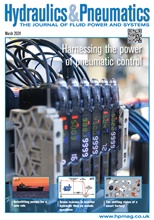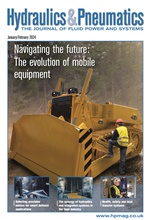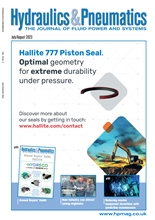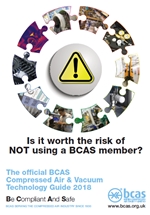- Home » Editorial » Hydraulics
Recovering high value products helps food factories maximise returns
By Matt Hale, International sales & marketing director, HRS Heat Exchangers.
When processing any kind of remotely viscous food product it is inevitable that a certain amount will adhere to surfaces, such as the inside of vessels and pipe work, or become left in equipment after processing. The potential value of this lost product can soon add up, especially when handling large quantities of viscous, valuable products such as honey, syrups and purées.
There is relatively little data available on the amount of product lost during processing. One European study in 2010 suggested that 4.1 million tonnes of food was lost during processing each year in the UK1, although no further breakdown is available. In addition, the analysis that the EU has done is concerned with calculating the environmental impact of such waste, for example in terms of associated greenhouse gas emissions, rather than the economic costs to businesses and society. At a time when all forms of food waste is under increasing scrutiny, it is important that all parts of the food chain are as efficient as possible when it comes to wastage.
Room for improvement
The good news is that the processing and packaging part of the food chain is already the most efficient, accounting for just 4% of overall food losses according to the UN Food and Agriculture Organisation (FAO)2. However, there is always room for improvement and management processes and equipment design are the two biggest tools food manufactures have at their disposal. Many manufacturers are already adopting this type of best practice. For example, since 2009 PepsiCo has reduced food losses at its UK sites by 20% as part of a wider initiative spearheaded by the IGD3.
There are two ways of minimising such losses in equipment and in an ideal situation they will be used in combination. The first involves designing equipment, such as tubular heat exchangers, which prevent product adhering to the surface in the first place – keeping it flowing through the system. The second aspect is the use of dedicated systems to clean and recover product from equipment after processing and before full cleaning occurs.
Many modern heat exchangers are designed to handle viscous fluids without fouling. Some of these units use the corrugated tube designs, while other units used in more demanding situations use scrapers to continually remove residues from the surface of the tubes before they build up. These heat exchangers can be used for numerous processes, including heating and cooling, cooking, concentrating, pasteurising and sterilising.
Self-cleaning advantages
This self-cleaning provides two advantages in use. First, as the foodstuff being treated is kept moving and does not adhere to the tube surface losses during processing are minimised. Secondly, because a ‘fouling layer’ is not built up, the optimal thermal performance of the heat exchanger is maintained increasing process efficiency and reducing energy use or treatment times.
-
Smart Manufacturing & Engineering Week
05 - 06 June, 2024
NEC, Birmingham -
HILLHEAD 2024
25 June, 2024, 9:00 - 27 June, 2024, 16:00
Hillhead Quarry, Buxton, Derbyshire UK










